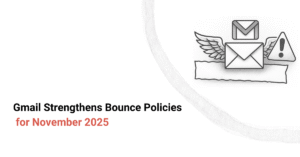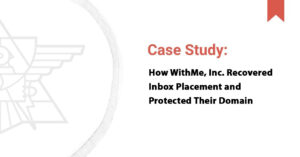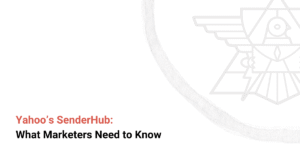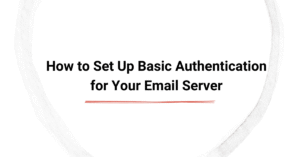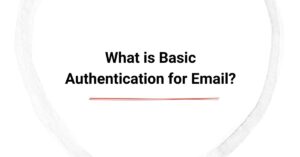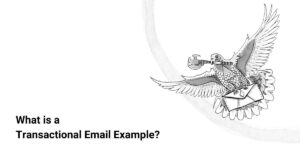Email marketing is an effective tool, but with so much noise in inboxes, it can be challenging to stand out and maintain customer engagement. You've probably seen how your open rates fluctuate despite using the same approach over and over. That's because the best email marketing campaigns are built on more than just catchy subject lines or a solid design. They need to be strategically planned, executed at the right time, and continuously optimized to resonate with your target audience. The 5 T’s of Email Marketing provide the clarity you need to improve your campaigns and see better results.
The secret to effective email campaigns lies in a well-structured framework. If you're a marketer in the B2B space or part of a SaaS company looking to improve your email deliverability, open rates, and conversions, this framework will give you the foundation to succeed. In this post, we’ll walk you through The 5 T’s of Email Marketing: Targeting, Timing, Testing, Trust, and Tracking, and how they can help you optimize your email strategy.
What Are the 4 C’s of Email Marketing?
Before we get into the 5 T’s, let's take a quick look at the 4 C’s of email marketing: Content, Context, Connection, and Consistency. These are the pillars that support any effective email campaign. Without them, your emails will fail to reach their full potential.
The 4 C’s Breakdown
- Content: The actual message you’re delivering. Content should be aligned with the needs and preferences of your audience to nurture a strong customer relationship.
- Context: Context is understanding where your audience is in their lifecycle and delivering the right message at the right time.
- Connection: Email marketing is about building relationships, not just pushing products or services. A strong connection keeps your audience engaged.
- Consistency: You want your audience to expect your emails, not be overwhelmed by them. Consistent communication—without overdoing it—builds familiarity and trust.
How the 5 T’s Relate to the 4 C’s
The 5 T’s—Targeting, Timing, Testing, Trust, and Tracking—are the actionable elements that bring the 4 C’s to life. They help ensure that your emails are sent with precision, tested for optimization, and trusted by your audience. Together, these principles will not only take your email campaigns from just another inbox message, but also elevate them into highly engaging, conversion-driven communications. As a result, they will capture attention and drive meaningful outcomes.
What Are the Best Email Marketing Strategies?
Email marketing is no longer a one-size-fits-all approach. With the right strategies, you can develop targeted campaigns that resonate with your audience. The 5 T’s of Email Marketing provide a roadmap for you to optimize your efforts and drive results. Let’s break down each component of the framework.
Targeting

Targeting is the first step in creating an email marketing strategy that works. It involves segmenting your email list based on key data points, like demographic information, past behavior, or engagement levels. By sending tailored messages to specific segments, you significantly increase the likelihood that your emails will resonate and prompt action.
Role in Campaigns: With effective targeting, you can personalize your campaigns. A well-targeted email content will feel relevant to each recipient, improving your open and click-through rates. Think about how you'd feel if you received a generic email about a product or service that doesn't apply to your interests. You’d likely ignore it. But if the email speaks directly to your needs or interests, you’re more inclined to engage.
Example: For a SaaS company offering CRM tools, you would target different customer segments like trial users, new sign-ups, and long-term customers with distinct messaging that speaks directly to their experience and needs at that time.
Tips for Effective Targeting:
- Segmentation: Use data from website interactions, previous email campaigns, and customer profiles to create segments that are more likely to convert.
- Personalization: Go beyond just using the recipient’s name in the email. Tailor content based on their behavior, preferences, and lifecycle stage.
- Behavioral Data: Leverage behavioral triggers, such as email opens, clicks, or abandoned cart activity, to send highly relevant messages.
Timing
Campaign timing in email marketing refers to when you send your emails. Send your message at the right moment, and you're more likely to increase engagement. Mis-timed emails may get lost or ignored, but the right timing can boost open rates and conversions.
Role in Campaigns: Proper timing aligns your email messages with your audience’s activity. Think about your customer’s time zone, work habits, and when they are most likely to check their inboxes. This is critical for ensuring that your email gets noticed, read, and acted upon.
Example: If you know your audience is made up of business professionals, scheduling your email for mid-morning on weekdays may yield better results than sending it late at night or on weekends. However, if you're reaching consumers, weekends might be a better choice.
Tips for Optimizing Timing:
- Test Different Times: A/B testing different send times and days can help identify when your audience is most responsive.
- Behavioral Timing: Leverage data to send emails based on customer behavior, like sending an abandoned cart email shortly after a customer leaves your website.
- Automation: Set up automated campaigns to send timely messages based on user actions, such as sign-ups, downloads, or purchases.
Testing
Testing is critical to optimizing your email marketing campaigns. By regularly testing different elements of your emails, you can find what works best for your audience and improve your results.
Role in Campaigns: Email testing allows you to experiment with various elements like subject lines, copy, CTAs, and images. With the data collected from these tests, you can refine your campaigns to maximize engagement.
Example: Let’s say you’re testing two different subject lines for the same email. One is direct and to the point: "50% Off Your Next Purchase". The other is more curiosity-driven: "Your Special Offer Awaits." By testing both subject lines with a segment of your audience, you can determine which one performs better in terms of open rates.
Tips for Effective Testing:
- Test One Element at a Time: For clarity, focus on testing one variable at a time—whether it’s the subject line, CTA, or copy.
- Track Metrics: Use analytics to track which versions of your emails performed better and why.
- Segment Testing: If you have a large audience, segment it into smaller groups for more specific tests and comparisons.
Trust
Trust is the backbone of your email marketing efforts. Without trust, even the best-crafted emails will fall flat. Building trust means ensuring your messages land in your recipient’s inbox and that they feel comfortable opening and clicking through your emails.
Role in Campaigns: To build trust, you need to focus on your sender reputation. This involves following email best practices, keeping your list clean, and delivering valuable content consistently.
Example: A customer who has received several emails from you without issue is more likely to trust future messages. However, if your emails frequently land in spam folders or seem untrustworthy, they may not even be opened.
Tips for Building Trust:
- Email Authentication: Set up authentication protocols like SPF (Sender Policy Framework) and DKIM (DomainKeys Identified Mail) to improve deliverability.
- Use a Consistent “From” Name: Keep your sender name and email address consistent so recipients can easily recognize your emails.
- Provide Value: Make sure your emails offer something of value—whether it’s useful content, product updates, or special offers—to keep your audience engaged.
Tracking
Tracking is crucial for understanding how well your email campaigns are performing and identifying your campaign’s strengths and areas for improvement. By tracking key metrics like open rates, click-through rates, and conversions, you can refine your strategy and make data-driven decisions.
Role in Campaigns: Effective tracking helps you identify what’s working and what needs adjustment. Without tracking, you would be flying blind, unsure of why your campaigns are succeeding or failing.
Example: After sending an email, you track the open rate and see it’s lower than expected. By analyzing the subject line and content, you may realize that the email didn’t resonate with your audience or that the timing was off.
Tips for Effective Tracking:
- Measure the Right Metrics: Track open rates, click-through rates, and conversion rates, but also keep an eye on bounce rates and unsubscribe rates.
- Use UTM Parameters: Add UTM parameters to your email links so you can track the success of your campaigns in Google Analytics.
- Adjust Based on Data: Regularly review your tracking data and adjust your strategy accordingly to optimize performance.
How to Create an Email Strategy That Converts
Creating a high-converting email strategy starts with understanding the 5 T’s and then applying them strategically. Here’s how you can use the framework to develop an email strategy that gets results.
Step 1 – Set Clear Goals
Before you start sending emails, it's important to set specific, measurable goals. Whether it's increasing conversions, generating more leads, or boosting engagement, having clear goals will help you tailor your strategy accordingly, ensuring you stay focused on what matters most.
Step 2 – Implement the 5 T’s Framework
Once you’ve set your goals, begin implementing the 5 T’s in every part of your email campaign. Targeting ensures your emails are sent to the right people, Timing ensures they’re sent at the right moment, Testing helps you refine your approach, Trust builds a solid sender reputation, and Tracking ensures you're always optimizing for better results.
Step 3 – Map Emails to the Customer Lifecycle
Align your emails with where your audience is in their journey. For example, a first-time visitor to your website might appreciate a welcome email with helpful resources, while a loyal customer may respond better to a personalized offer.
Step 4 – Review and Optimize
Your email strategy should never remain static. Use your tracking data to continually refine your strategy. Test different approaches, adjust based on your insights, and always look for ways to improve your email performance.
What Is the Ideal Email Length?
The ideal length for an email depends on its purpose. For example, promotional emails should be short and to the point, while newsletters may require more in-depth content. Here's how to approach different email types:
- Newsletters: Medium-to-long length, segmented content that’s easy to skim.
- Promotional Emails: Short, compelling, with a strong CTA.
- Lifecycle Emails: Brief and timely, matching the customer’s current behavior.
- Transactional Emails: Straightforward, with only essential information.
Conclusion
The 5 T’s of Email Marketing—Targeting, Timing, Testing, Trust, and Tracking—provide a solid foundation for any successful email campaign. By applying these principles, you can ensure that your emails are reaching the right people at the right time, tested for optimization, and building trust with your audience. Over time, these tactics will improve your email deliverability, engagement, and conversions.
Looking to build high-performing email campaigns? Contact us today to see how the 5 T’s can transform your email marketing strategy.


